Hossein Ziaei Nafchi
Efficient No-Reference Quality Assessment and Classification Model for Contrast Distorted Images
Apr 07, 2018



Abstract:In this paper, an efficient Minkowski Distance based Metric (MDM) for no-reference (NR) quality assessment of contrast distorted images is proposed. It is shown that higher orders of Minkowski distance and entropy provide accurate quality prediction for the contrast distorted images. The proposed metric performs predictions by extracting only three features from the distorted images followed by a regression analysis. Furthermore, the proposed features are able to classify type of the contrast distorted images with a high accuracy. Experimental results on four datasets CSIQ, TID2013, CCID2014, and SIQAD show that the proposed metric with a very low complexity provides better quality predictions than the state-of-the-art NR metrics. The MATLAB source code of the proposed metric is available to public at http://www.synchromedia.ca/system/files/MDM.zip.
FSITM: A Feature Similarity Index For Tone-Mapped Images
Apr 19, 2017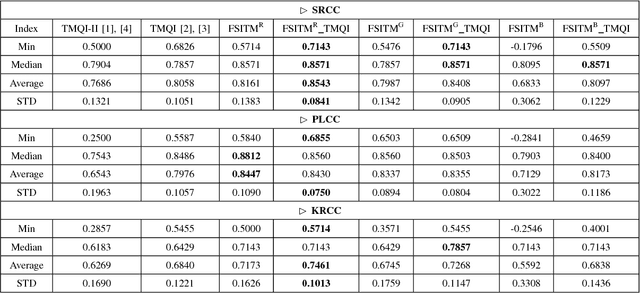

Abstract:In this work, based on the local phase information of images, an objective index, called the feature similarity index for tone-mapped images (FSITM), is proposed. To evaluate a tone mapping operator (TMO), the proposed index compares the locally weighted mean phase angle map of an original high dynamic range (HDR) to that of its associated tone-mapped image calculated using the output of the TMO method. In experiments on two standard databases, it is shown that the proposed FSITM method outperforms the state-of-the-art index, the tone mapped quality index (TMQI). In addition, a higher performance is obtained by combining the FSITM and TMQI indices. The MATLAB source code of the proposed metric(s) is available at https://www.mathworks.com/matlabcentral/fileexchange/59814.
* 4 Pages, 1 Figure, 1 Table
Mean Deviation Similarity Index: Efficient and Reliable Full-Reference Image Quality Evaluator
Apr 19, 2017



Abstract:Applications of perceptual image quality assessment (IQA) in image and video processing, such as image acquisition, image compression, image restoration and multimedia communication, have led to the development of many IQA metrics. In this paper, a reliable full reference IQA model is proposed that utilize gradient similarity (GS), chromaticity similarity (CS), and deviation pooling (DP). By considering the shortcomings of the commonly used GS to model human visual system (HVS), a new GS is proposed through a fusion technique that is more likely to follow HVS. We propose an efficient and effective formulation to calculate the joint similarity map of two chromatic channels for the purpose of measuring color changes. In comparison with a commonly used formulation in the literature, the proposed CS map is shown to be more efficient and provide comparable or better quality predictions. Motivated by a recent work that utilizes the standard deviation pooling, a general formulation of the DP is presented in this paper and used to compute a final score from the proposed GS and CS maps. This proposed formulation of DP benefits from the Minkowski pooling and a proposed power pooling as well. The experimental results on six datasets of natural images, a synthetic dataset, and a digitally retouched dataset show that the proposed index provides comparable or better quality predictions than the most recent and competing state-of-the-art IQA metrics in the literature, it is reliable and has low complexity. The MATLAB source code of the proposed metric is available at https://www.mathworks.com/matlabcentral/fileexchange/59809.
MUG: A Parameterless No-Reference JPEG Quality Evaluator Robust to Block Size and Misalignment
Sep 19, 2016



Abstract:In this letter, a very simple no-reference image quality assessment (NR-IQA) model for JPEG compressed images is proposed. The proposed metric called median of unique gradients (MUG) is based on the very simple facts of unique gradient magnitudes of JPEG compressed images. MUG is a parameterless metric and does not need training. Unlike other NR-IQAs, MUG is independent to block size and cropping. A more stable index called MUG+ is also introduced. The experimental results on six benchmark datasets of natural images and a benchmark dataset of synthetic images show that MUG is comparable to the state-of-the-art indices in literature. In addition, its performance remains unchanged for the case of the cropped images in which block boundaries are not known. The MATLAB source code of the proposed metrics is available at https://dl.dropboxusercontent.com/u/74505502/MUG.m and https://dl.dropboxusercontent.com/u/74505502/MUGplus.m.
Persian Heritage Image Binarization Competition (PHIBC 2012)
Apr 21, 2016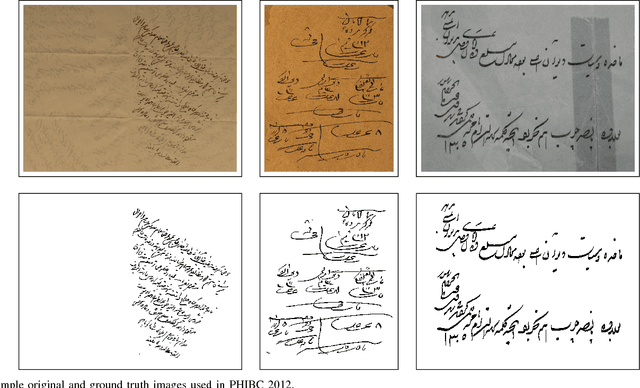
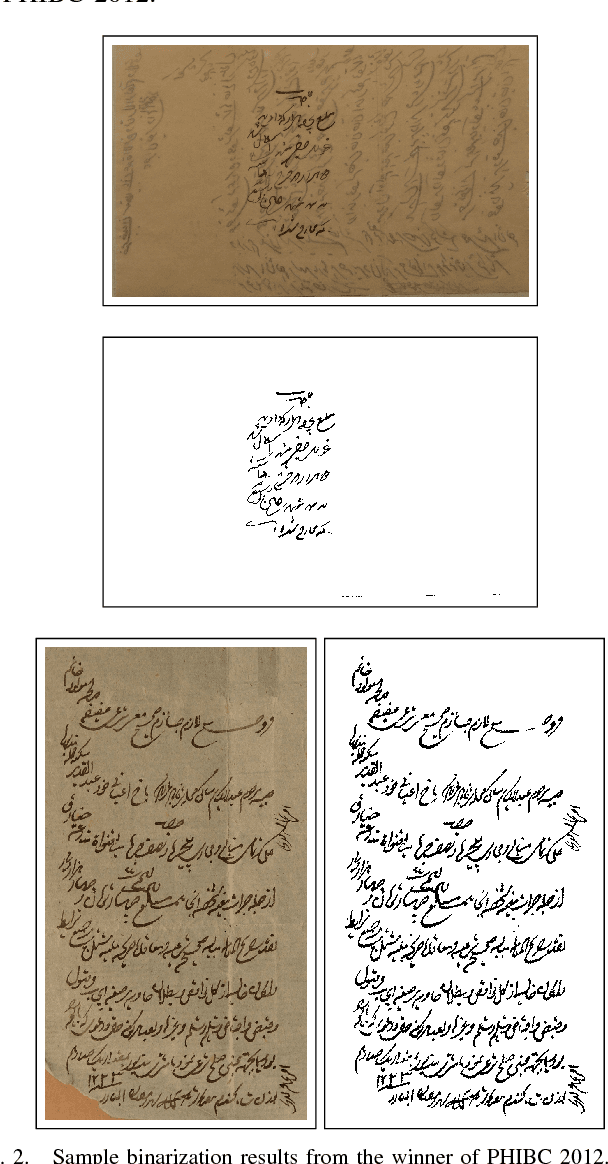

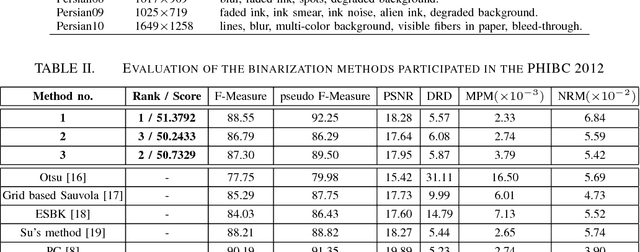
Abstract:The first competition on the binarization of historical Persian documents and manuscripts (PHIBC 2012) has been organized in conjunction with the first Iranian conference on pattern recognition and image analysis (PRIA 2013). The main objective of PHIBC 2012 is to evaluate performance of the binarization methodologies, when applied on the Persian heritage images. This paper provides a report on the methodology and performance of the three submitted algorithms based on evaluation measures has been used.
Deviation Based Pooling Strategies For Full Reference Image Quality Assessment
May 06, 2015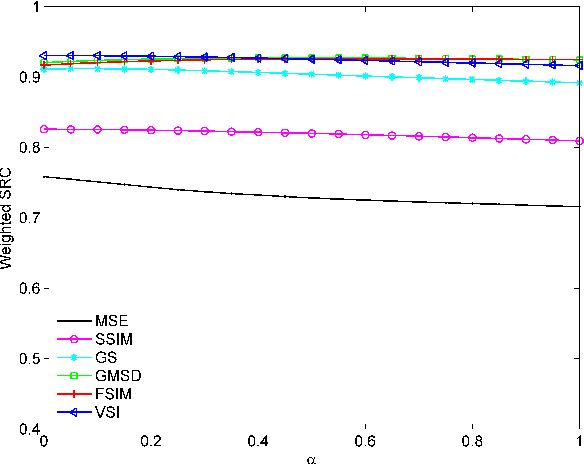
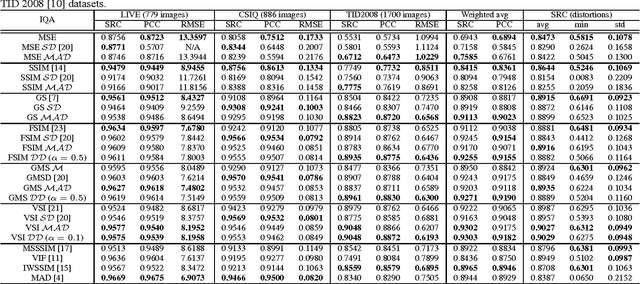

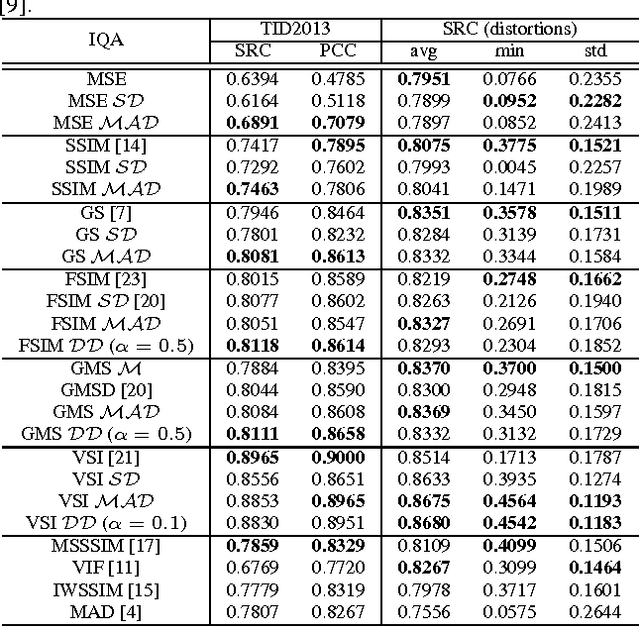
Abstract:The state-of-the-art pooling strategies for perceptual image quality assessment (IQA) are based on the mean and the weighted mean. They are robust pooling strategies which usually provide a moderate to high performance for different IQAs. Recently, standard deviation (SD) pooling was also proposed. Although, this deviation pooling provides a very high performance for a few IQAs, its performance is lower than mean poolings for many other IQAs. In this paper, we propose to use the mean absolute deviation (MAD) and show that it is a more robust and accurate pooling strategy for a wider range of IQAs. In fact, MAD pooling has the advantages of both mean pooling and SD pooling. The joint computation and use of the MAD and SD pooling strategies is also considered in this paper. Experimental results provide useful information on the choice of the proper deviation pooling strategy for different IQA models.
 Add to Chrome
Add to Chrome Add to Firefox
Add to Firefox Add to Edge
Add to Edge